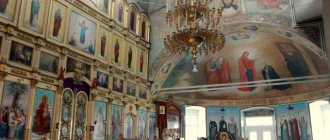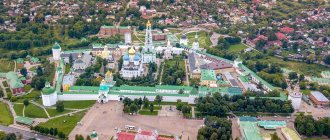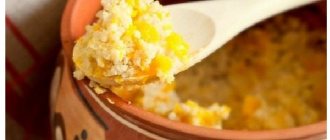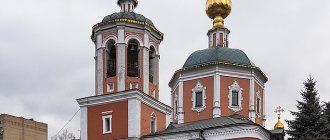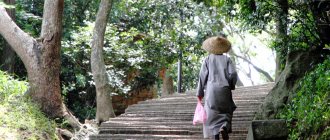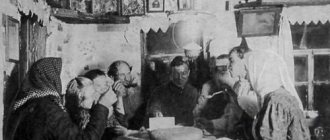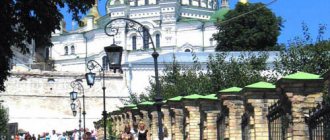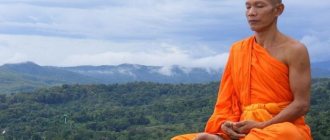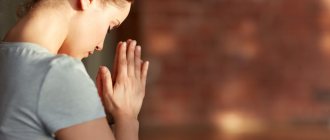It's no secret that many centuries ago the monastery gardens and vegetable gardens were the best in the entire area. They were cultivated with special difficulty, because monasteries were often built separately, and food was required for every day. Therefore, the servants of ancient Orthodox monasteries not only fed themselves from these gardens and vegetable gardens, but also selected the best varieties of vegetable and fruit crops. The monks and nuns fed not only themselves, but also the hungry poor and wandering pilgrims.
In addition to the garden and vegetable garden, the monasteries kept apiaries. Honey at monasteries is especially healing and tasty. This is explained by the fact that it was mined in environmentally friendly places. The monks will never place an apiary anywhere, but will choose the cleanest place for it on their property. Honey is useful not only during illness, but also as a daily food - healing and giving energy. This is a unique natural product that improves immunity. Honey is very important for baby food if there is no allergy to it.
Monastic bread is also a special product that deserves attention. Most often it is baked according to old recipes. Previously, they tried to grow rye and wheat right at the monasteries.
Feofan bakes bread Photo: Evgeny Kharlanov, Source
Of course, times have changed, and now a significant part of the products for the monastery kitchen is purchased from various suppliers, but in some places they still sacredly honor traditions and try to grow everything with their own hands. Since previously they did not use yeast in baking, but made high-grade sourdough dough, these traditions have been preserved in some monasteries to this day.
Monks spend little time eating and eat sparingly, especially during Lent.
Despite the beautiful name, the meal in the monastery is not distinguished by either the abundance of dishes or their volume. Everything here is modest, as much as necessary. Typically, monks gather for 10–15 minutes at a set time in a room called the refectory.
It is not customary to socialize while eating. Everyone listens to the reader who reads the Holy Scriptures. Even mealtimes are dedicated to drawing closer to God. The senior ranks sit at the head of the table.
The room for eating food in the monastery is called the refectory.
The number of dishes and their composition vary depending on the region. This is mainly plant food (beans, vegetables, fruits, berries), and necessarily bread. Drinks include juice, tea or coffee. There is wine in monasteries, but it is often allowed to be drunk in limited quantities and only diluted with hot water to six degrees.
What you definitely won’t find on the monks’ tables is meat, sweets, and various types of excesses. Preference is given to:
- porridge;
- soups;
- pasta.
The restriction in food is especially felt on days of fasting, when monks are strictly forbidden to eat fish, milk, and eggs.
The monks are confident that restrictions of this kind have a beneficial effect on spiritual development, because they are focused not on the body, but on the spirit.
See also the article How to become a monk
History of the Trinity-Sergius Lavra
The founding date of the Trinity-Sergius Hermitage is considered to be 1337, when Bartholomew (Sergius of Radonezh) and his older brother Stefan settled on Makovets Hill near Khotkov.
First they erected a small wooden temple, and then the first monastic buildings began to appear. Gradually the first inhabitants came here, the hermitage turned into a monastery with its own way of life, around which artisans began to settle. The number of settlements grew, and in March 1782, Catherine II signed a decree on the creation of Sergievsky Posad near the walls of the Trinity-Sergius Lavra. In 1993, the architectural ensemble of the Lavra was included in the UNESCO World Heritage List, so today they are trying to relieve it as much as possible. But still, the monastery resembles a huge anthill, where all the premises are used, including those inside the stone historical monastery walls.
Bird's eye view of the Trinity Lavra of St. Sergius
The monks of Athos starve and live to a ripe old age because of it
The way they eat in the monastery can be illustrated by the example of the monks from the holy Mount Athos. The people of the local monastery live to a ripe old age, although they fast regularly.
They eat twice a day, at sunrise and sunset. Lunch is not provided.
- Breakfast at 8:00;
- Dinner at 18:00;
- In winter, the time shifts by an hour.
No snacks. The monks grow most of the food themselves in the garden beds; they choose the simplest dishes so as not to spend a lot of time on preparation.
The monks are radiant with health.
Excluded from food:
- Vegetable, butter, vegetable oil;
- Fats;
- Meat;
- Margarine;
- Cream;
- Spices.
Main focus on:
- Fruits;
- Mushrooms;
- Herbs;
- Berries;
- Legumes;
- Vegetables.
They can be consumed in unlimited quantities.
Kitchen of the Athos Monastery
- Instead of meat - cheese, eggs, seafood;
- You can pamper yourself with pies and halva;
- Drinks: tea, coffee, wine.
A special place is given to bread. It gives energy and saturation.
This diet gets rid of fat and cholesterol, eliminates problems with sugar, and has a beneficial effect on blood pressure.
The monks note that it is not so much about the products, but about restrictions and fasting, which have a beneficial effect on health.
Dumplings with buckwheat and mushrooms
Ingredients:
- 2 tbsp. flour;
- 50 g boiling water;
- 0.5 cups vegetable oil;
- 40 g dried porcini mushrooms;
- 1 glass of boiled buckwheat;
- 1 onion, bay leaf;
- black peppercorns;
- parsley;
- salt.
Measure out 4 tbsp. spoons of vegetable oil and pour into a bowl. Pour boiling water into the oil, add 2 tbsp. flour and knead a stiff dough. Boil and chop the dried mushrooms. Leave the broth after the mushrooms. Finely chop the onion and sauté in vegetable oil, add mushrooms to it and fry. Mix mushrooms with onions, boiled buckwheat and parsley. Add salt and pepper to taste.
Photo: Depositphotos
Put water on the fire to boil. When it boils, add bay leaf and black peppercorns. Roll out the dough into a thin layer. Using a glass, cut out circles from the dough and make dumplings.
Immerse the dumplings only in boiling water and cook with stirring for 5 minutes after floating to the surface. Serve hot with mushroom broth.
Believers can bring food to monasteries, but more often monks do the farming themselves
Products reach Russian Orthodox monasteries in different ways. For example, local residents willingly supply food to some monasteries. Who can do what? They bring it from gardens, greenhouses, or what they purchased themselves.
Monks accept these gifts, but not always. There are restrictions. And they must be followed. There is no need for cognac or sweets in the monastery. They are trying to politely return this to the believers.
Not every meal can be accepted by monks from believers.
During Lent it is even more difficult - after all, monks must follow even stricter food prohibitions.
But, of course, it is impossible to live on donations alone. Monasteries, as a rule, have something of their own. Father Micah, hieromonk of the St. Daniel Monastery, says:
Micah
Hieromonk
“Before 1917, the monastery had vast lands, arable lands, apiaries, and ponds. There were many and good products. The monastery sold a lot of things, incl. in their own shops and stores. People have always loved them - both Muscovites and pilgrims. Then everything was destroyed, literally - to the ground.
But over the past 17 years, of course, a lot of progress has been made. If you look back today, you see how much we, with God’s help, have achieved! And we ourselves grow wheat on the monastery lands, grind flour, and bake our famous baked goods. And we grow and preserve all the necessary vegetables: we can them, ferment them, and salt them.
And now the monastery has more than one apiary - in the Moscow region on the monastery farm, near Ryazan, near Anapa and from Altai, honey is also supplied from the apiaries of the Church of the Archangel Michael. The largest apiary is near Ryazan.
Now we have about 300 hives here and during the season we manage to obtain more than 10 varieties of honey in our apiaries. These include sweet clover, linden, buckwheat, and honeys of forest and field herbs. Every new season, before the bees fly out, special prayers are held to consecrate the apiary, and the beekeepers receive a blessing for the upcoming work.”
Suzdal monks work in the monastery garden
. Of course, large monasteries can afford to live on income from pilgrims. They make and sell here:
- Books;
- Samples;
- Crosses;
- Icons.
The monks also conduct paid services.
It is more difficult for remote monasteries. You have to work hard in the garden or garden, keep the cows, and pack up for the winter. This does not take into account the fact that significant expenses are spent on repairs, clothing, etc.
Lenten but sweet?
For some reason, many people forget about baking during Lent. But pies, pies, puff pastries and kulebyaki can be easily prepared with the permitted fillings: rice, cabbage, onions, spinach, tofu, herbs, shrimp, squid, etc. No less tasty are sweet cakes with fruits, honey or nuts - indispensable attributes of Lenten table. In addition, you can get creative with ready-made Lenten cookies made from rolled oats and buckwheat flakes - if you flavor them with honey and kernels of your favorite nuts, you will get a great delicacy.
The usual sweets can also be Lenten: pancakes, pizza, strudels. You can even eat sweets during Lent if you make them with sweet dried fruits and delicious nutritious nuts!
Fast with taste. 5 unusual vegetable cutlets
More details
To strengthen the will and out of love for God's creations, monks do not eat meat
Why don't monks eat meat? And there are many reasons for this. The most important of them is compassion. This idea exists not only in Russian Orthodoxy, but is also widespread throughout the world. Old Eastern traditions still require their adherents to strictly abstain from meat. Live without harming anyone - this is their main commandment.
But let's return to Orthodoxy. There are a number of local churches, such as the Greek one, where they eat meat. But in Rus' this is unacceptable.
What does refusing it give monks?
- Strengthening the will . Constant fasting is a strengthening of the will, an opportunity to keep it in check. Monasticism is not a static state, but a constant strengthening of personal qualities for the glory of the Lord. So such restrictions are simply necessary.
- Showing love for God's creations . Life is the most valuable thing in the world, it is the crown of God’s creation. And you need to grow to the realization that life is the same everywhere - in a person, in a chicken, and in a hare. Compassion for her is an act of kindness and pure reason. A monk does not put taste pleasure above anyone's life. He loves every creature of God, for in it he sees a reflection of the Divine plan.
The Bible says:
(Prov. 12, 10.)
“Blessed is he who has mercy on cattle”
That is, an Orthodox person must treat animals with love and mercy. To illustrate this principle, it is worth remembering Father Jerome of Sanaxar. Even before becoming a monk, as a priest, he served in Mordovia, where he spent the night in a separate room.
Local church watchmen noticed that the lights were on all the time there at night. The window often opens, and a hand appears in it. And so on all night, for several days in a row.
Schema-abbot Jerome (Verendyakin) not only could not eat meat, but even considered killing a bug to be a bad act
One morning the future elder was asked: “Father, to whom are you waving from the window at night?”, and he replied that his room was full of bedbugs. When they got really bored, Father Jerome would let them out into the street.
A truly spiritual person is merciful to all living things.
The locals offered to kill the insects, but the future elder did not allow it. He said that it was good for him: they didn’t let him fall asleep at night, so he could just pray before the service.
This is an example of the worldview of a truly spiritual person.
Someone, perhaps, will object - they say, so be it, but with food there is a way out - not to kill the animals yourself, but to buy ready-made meat. Let's say. But isn’t the killer who ordered the murder just as responsible for the murder as the perpetrator? It's the same here. That's why monks don't eat meat.
Lenten homemade sweets
Photo: Shutterstock.com
Ingredients:
Hazelnuts - 20 pcs. Dried apricots - 70 g Prunes - 70 g Light raisins - 50 g
How to cook:
- Rinse dried fruits thoroughly. If necessary, soak in warm water for an hour.
- Place dried fruits in a blender or meat grinder and grind until smooth.
- Set aside ten hazelnuts for ten candies, grind the rest coarsely in a blender or coffee grinder.
- Take a nut, roll it in the fruit mixture and sprinkle with ground hazelnuts.
Monks are not vegetarians
One could call the monks vegetarians, but this is not an entirely correct definition. Vegetarianism is the name given to an approach to nutrition. Monasticism is an approach to life.
The monk does not seek scientific approval for his diet . For example, there will always be people who want to argue with a vegetarian, saying that a person is a carnivore, and it is impossible to live without meat. The experience of elders, saints, monks (from any tradition, not just ours) proves that life without eating the flesh is possible.
But they don't need to get into discussions about nutrition. This is not a matter of choice, not a question of belonging to predators and herbivores. A monk may even believe that he is a predator by nature, or read about scientific research that proves the opposite. This will not affect his eating habits in any way.
The monk does not try to compensate for missing nutrients . Many famous athletes who live on a plant-based diet (for example, Mike Tyson) also manage to become record holders, but they are a different story.
They are concerned about issues of balanced nutrition and amino acid replacement. Monks are not involved in gastronomic calculations of the amount of protein and are not concerned with the issue of healthy food. They don't care about this. They simply refused to eat animals, that's all.
Nuns make seams (Spaso-Preobrazhensky Cheboksary Convent)
Breaking the fast
One day a week you can move away from the strict restrictions of your diet and “feast” - treat yourself to what you love . Save this day for going to a restaurant, a festive dinner with friends or with your family.
The beauty of the diet of the Athonite monks is that you don’t have to constantly deny yourself everything. On the contrary, you can go to visit and eat a piece of cake without a twinge of conscience, because you know: tomorrow is a fast day. Breaking the fast days helps solve the problem of feelings of deprivation and guilt typical of other diets.
Most likely, at first you will look forward to Sunday so that you can eat your fill, but gradually you will notice: you are no longer craving fatty and sweet foods, although before you could not live without them. And this is another positive property of the Athonite diet.
Monks eat fish, except on days of fasting and in those cases when they themselves forbid it.
In light of the above, it is fair to ask again: do monks eat fish? Mostly yes. Although the history of Christianity also knew cases when people did not eat. For example, Saint Epiphanius reported about such monasteries. But now in the Russian Orthodox Church the ban on it, as well as eggs and milk, is valid only during Lent and other days of abstinence.
At one time, in Rus', when the charters of monasteries were formed, the emphasis was placed on the prohibition of eating meat. Fish was chosen as a replacement for him. It has continued like this ever since.
Some monks voluntarily gave up fish, although the charter does not require this.
But some prominent Christian figures also refuse fish. For example, Seraphim of Sarov preferred to eat oatmeal and chopped cabbage, but excluded all animals.
By leaving a comment, you accept the user agreement
Does coconut produce milk?
When a person denies himself a lot, he must compensate for the lack of vitamins with heavy doses of vegetables and fruits. Nibble carrots and bell peppers, chop cabbage and celery, eat oranges and tangerines and treat yourself to exotic fruits for a change. For example, avocado, mango, pineapple. Coconut milk, which our ancestors had never even heard of, can now also be found in many stores. It usually comes to us in cans and is a mixture of coconut liquid and crushed fruit pulp, rich in minerals and vitamins. Of course, it won’t replace cow’s milk, but it will give a stunning, refined taste to various dishes.
Vegetable stew “Monastic”
Ingredients:
- 4 potatoes;
- 1 large carrot;
- 1 beet;
- 1 onion;
- 250 g cabbage;
- 100 g canned green peas;
- Bay leaf;
- vegetable oil;
- salt.
Finely cut all vegetables into cubes. Place them in clay pots, into which pour 100 g of hot water. Add 1 bay leaf to each pot. Close the pots tightly with lids and simmer in a preheated oven for 40 minutes. After cooking, add canned green peas, salt and vegetable oil to taste.
Photo:
